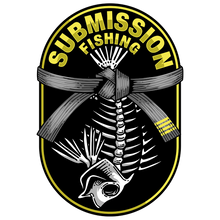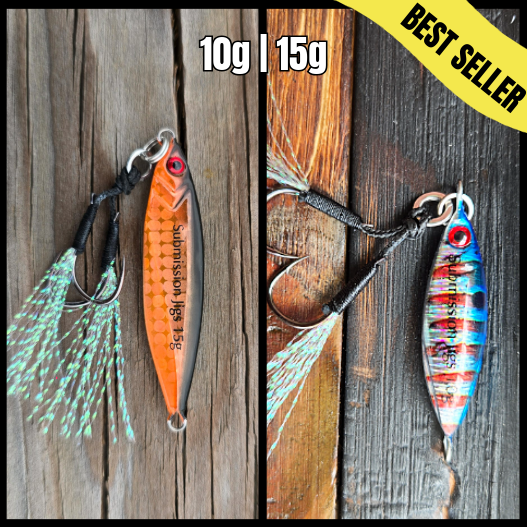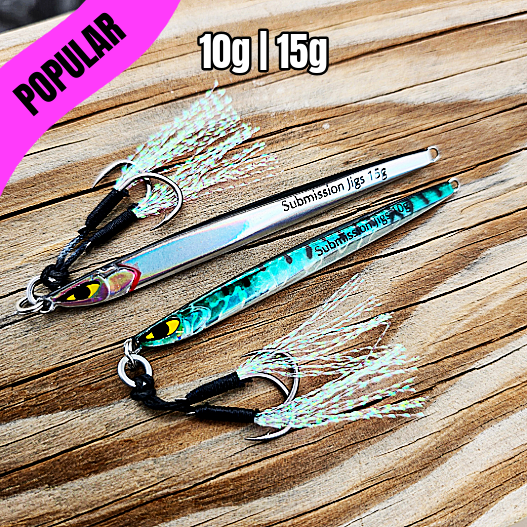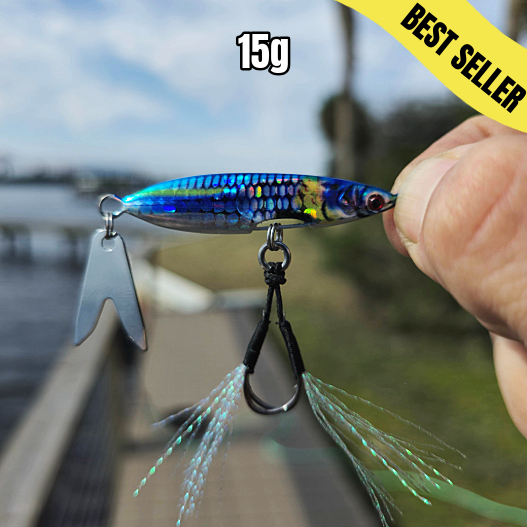Slow-Pitch vs Vertical Jigging: Why Metal Lures Catch More Fish
Slow-Pitch vs Vertical Jigging: How to Earn Your Black Belt in Fishing
Some days the water humbles you. Cast after cast, empty hooks, cooler full of excuses. We’ve all been there. But here’s the truth: you don’t become a master by luck. You get there the same way you’d earn a black belt on the mats—through discipline, practice, and the right tools.
That’s why slow-pitch jigging is more than a technique. It’s a mindset. It’s about control, precision, and learning to create your own bite instead of waiting for one. With the right metal lures, you stop fishing and start catching.
Vertical Jigging vs Slow-Pitch: Speed vs Strategy
Traditional vertical jigging is all about brute force. You rip the jig upward, crank like crazy, and pray for a reaction strike on the rise. It can work—but it burns you out, and when fish aren’t aggressive, you’re just shadowboxing.
Slow-pitch jigging is the opposite: deliberate, precise, strategic. You let the jig fall like an injured baitfish, then lift and pause in rhythm, letting it flutter and slide side-to-side. Strikes almost always happen on the fall—when your lure looks like the easiest meal in the ocean.
It’s not chaos. It’s discipline. And discipline wins fights.
Why Metal Jigs Are the True Warrior’s Tool
Plastics and live bait? They’re fine for dabbling. But when you’re chasing mastery, nothing beats a properly built metal jig.
✅ Center-weighted, asymmetrical designs like our Sumo Jigs create the wounded-bait flutter that flips the switch in a predator’s brain.
✅ Through-wire construction means you won’t lose your lure—or the fish—when the battle gets heavy.
✅ UV foil + glow finishes keep your jig visible in dirty water, low light, or 300 feet down.
From docks to wrecks, kelp beds to offshore blue, Submission jigs keep you in the strike zone longer—so you can stay in the fight.
Training for Success: How to Set Up
Like martial arts, mastery starts with the basics:
-
Rod: 6–7 ft slow-pitch rod, light and sensitive, yet strong.
-
Reel: Narrow-spool conventional with smooth drag (Shimano Ocea Jigger, Daiwa Saltiga).
-
Line: 8-strand PE braid, 20–30lb typical, with fluorocarbon leader.
-
Hooks: Always front + back assist hooks. They’re your insurance policy.
And the cadence? Lift, pause, let it fall slack. Pay attention. Most strikes happen in the silence between moves—just like on the mats.
The Submission Fishing Way
In 2020, standing in San Diego Bay, I had the same thought I’d had on the mats countless times: this isn’t working. Big-box jigs were designed by suits, not fighters. Live bait died too fast. Plastics tore. Too many trips ended skunked.
So I built my own gear—tested, refined, and proven until I knew it would work under real-world pressure. Submission Fishing was born from that grind. Today, every jig we sell—from the micro Death Blade to the heavyweight Ogre—carries that DNA: built to fight, built to win.
This is gear forged with the same ethos as martial arts: practice, discipline, mastery. Fishing isn’t a hobby—it’s a lifelong pursuit of skill.
Best Jigs by the Battle Ahead
-
Shallow bays & lakes: Micro Sumo 10g & 15g — flutter assassins for spotties, trout, and bass.
-
Mid-range versatility: Javelin 100g–200g — ribbed body, erratic fall, deadly in kelp or wrecks.
-
Knife-style micro: Ogre Jr. 10g & 15g — the smallest slow-pitch knife jig on earth.
-
Heavy hitters: Samurai 400g–600g — built for tuna, grouper, tilefish.
-
Hooks for giants: Kraken Assist Hooks — short cords, strong steel, relentless hold.
Slow-Pitch Jigging FAQ
Q: What depth should I fish?
Use 1g per foot as a rule of thumb (100g jig for ~100 ft), adjust for current.
Q: Can I use spinning reels?
Yes—high-speed models with smooth drag work if paired with the right rod.
Q: Why assist hooks front and back?
Fish strike head and tail. Dual assists mean more hookups, fewer heartbreaks.
Ready to Level Up?
Fishing isn’t luck. It’s training, discipline, and mastery. If you’re tired of excuses, it’s time to fish like a fighter. Submission jigs don’t just help you catch—they help you earn your black belt in fishing.
👉 Shop the full jig lineup here
Want More Tips Like This?
Sign up for our email list and get:
- 🎁 15% off your first order
- 🚀 Early access to new product drops
- 🎥 How-to videos with Mike Muto
OSS.





